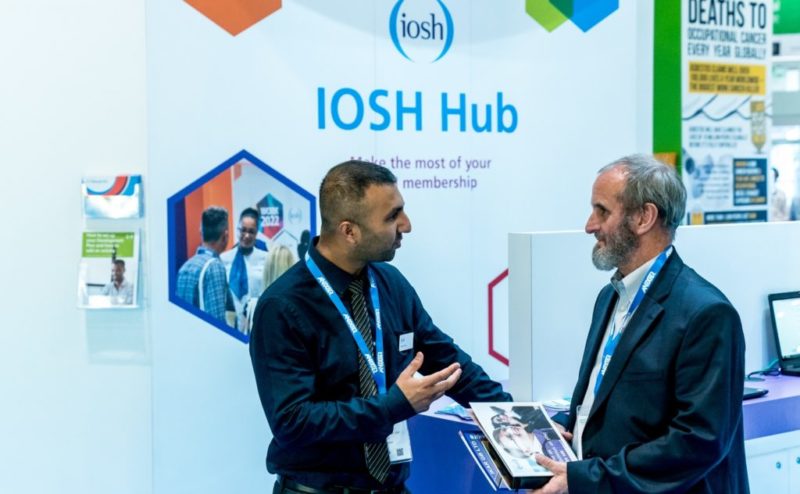
What do you see as the key issues facing the profession today?
“Businesses are under scrutiny to look after their people and employers must increasingly account for social performance, including metrics on the safety and health of their workforces. Now, more than ever, failures to safeguard working people’s safety and health have harmful repercussions for a business’s reputation and profitability.
“IOSH has a vision to create a ‘safe and healthy world of work’. In order to achieve this vision, it is critical to change perceptions of the world of health and safety so professionals feel empowered and proud, and business leaders understand the benefits good health and safety brings in terms of the success and performance of their organisation.
“The issue of health and safety at work must be re-positioned, and this requires a fundamental shift in thinking – from seeing it as a cost or compliance issue, to believing it to be a high-priority investment, driven from board level engagement.”

What’s your take on the more holistic approach to wellbeing that the profession is shifting towards?
“Research shows that being in work is generally good for people’s health and wellbeing, and case studies indicate that helping employees to improve or manage their health can result in increased attendance and performance.
“IOSH advocates a holistic, proactive approach to managing health and rehabilitation at work, with everyone working together – workers, managers, general practitioners, human resource and health and safety professionals – to tackle the causes of workplace injury and ill health.
“Wellbeing is important for employers, as it is related to economic capacity. If employers focus only on illness or absence management, they will only be managing cases of illness. Instead, they need to make the connection between an effective wellbeing programme and the health of their business.”
How does Safety & Health Expo fit with your strategy and further your work?
“Millions of people have their lives severely affected because of the work they do, with illness, injury and death all too common.
“We believe that we must work together to achieve a safer and healthier world of work and IOSH, as the chartered body for health and safety, can lead the way. Our five-year strategy, ‘WORK 2022 – shaping the future of safety and health’, sets out this vision and defines the steps that we, as an organisation and profession, need to take. We aim to enhance the occupational safety and health profession, strengthen our influence and impact globally and collaborate closely with organisations and our members.
“The valuable networking opportunities provided by Safety & Health Expo will provide us with a platform to engage with key stakeholders, share our expertise and hear from industry leaders and practitioners.”
You have world-leading research and initiatives to prevent ill health in the workplace, including No Time to Lose. Can you tell us more about this?
 “No Time to Lose is IOSH’s global campaign to raise awareness of occupational cancer and provide information and resources to help individuals and organisations manage the risks.
“No Time to Lose is IOSH’s global campaign to raise awareness of occupational cancer and provide information and resources to help individuals and organisations manage the risks.
“Asbestos fibres, diesel fumes, silica dust and solar radiation and among the most significant of the 50-plus work-related causes of cancer. For millions of people across the world, working with these carcinogens is a reality of their daily job.
“Many sectors and countries have already stopped or limited exposures to carcinogens, but much more needs to be done. We can beat occupational cancer if we work together to control the exposure risks.
“IOSH recently funded University of Nottingham researchers to investigate the implementation, use and utility of mental health first aid (MHFA) in the workplace. The research team surveyed people from 81 UK organisations, 89.9% of whom had taken part in MHFA training, and also conducted interviews with key workplace representatives. The research found both positives and areas for concern, including inadequate boundaries for employees and a lack of proof that MHFA is effective.
“The researchers recommend a clear definition of the trained person’s role within the organisation, with guidelines for roles, boundaries and safeguarding procedures, and further research and evaluation into the effectiveness and cost-effectiveness of MHFA training.
“Informed by the research, IOSH has developed additional guidance to help ask benchmarking questions about workplace mental health and wellbeing support and how to integrate mental health first aiders into a wider system of support.”
What can we look forward to at IOSH’s annual conference in September?
“IOSH 2019 takes place from 16-17 September at the ICC in the centre of Birmingham. Attending will provide delegates with a host of benefits. It is a unique opportunity to enhance your skills and knowledge as a safety and health specialist and improve the way your organisation looks after its people.
“The conference will include careers advice, interactive debates, industry updates, networking opportunities and the chance to see new innovations in safety and health and proves to be a valuable investment for safety and health practitioners.”
For the latest update and to book your place, visit www.ioshconference.com.
What makes us susceptible to burnout?
In this episode of the Safety & Health Podcast, ‘Burnout, stress and being human’, Heather Beach is joined by Stacy Thomson to discuss burnout, perfectionism and how to deal with burnout as an individual, as management and as an organisation.
We provide an insight on how to tackle burnout and why mental health is such a taboo subject, particularly in the workplace.



 “No Time to Lose is IOSH’s global campaign to raise awareness of occupational cancer and provide information and resources to help individuals and organisations manage the risks.
“No Time to Lose is IOSH’s global campaign to raise awareness of occupational cancer and provide information and resources to help individuals and organisations manage the risks.